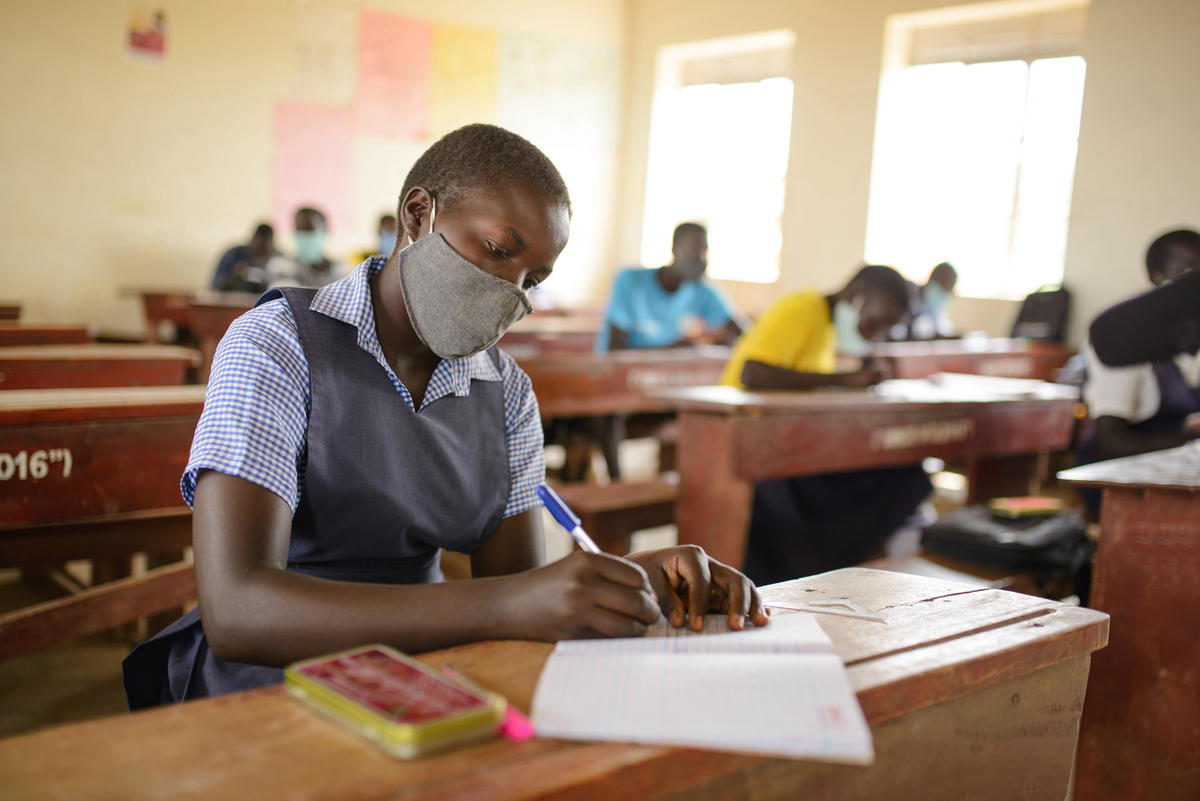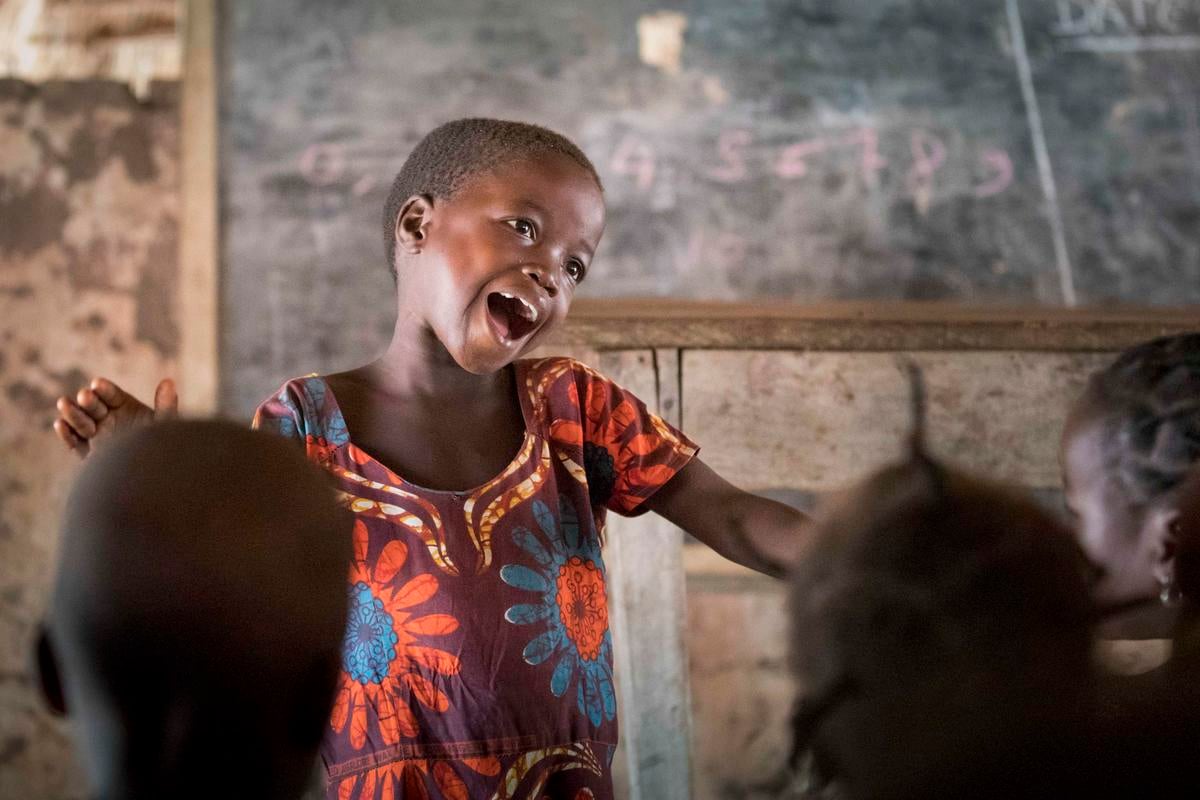New methodology helps refugee children in Southern Africa deal with violence
New methodology helps refugee children in Southern Africa deal with violence

CAPE TOWN, South Africa, December 12 (UNHCR) - John Habimani pointed at his painting, showing the bullets flying at his family and the road that brought him from the horrors of Rwanda to the safety of South Africa.
The gathering of refugee boys and girls organized by the Cape Town Refugee Centre in early December was linked to the annual worldwide campaign, 16 Days of Activism to eliminate violence against women, which ended on Saturday. But it also reflected UNHCR's determination to include specific protection of children at the heart of all its refugee programmes.
"My parents are dead - they died at the time I fled," said Habimani, who arrived in South Africa more than a decade ago. "Everyone was shooting at us." Now 16 years old, and proudly holding his latest school report, he is cared for in Cape Town by another refugee who also fled Rwanda.
His drawing was one of a score on display by young refugees who had participated in the first phase of UNHCR research to develop ways to assess the impact of violence and abuse on children. Instead of learning about children through their parents or other adults, the children themselves are approached directly.
To start with the children are asked to draw pictures of their current lives. After that, they are asked to record the more painful memories of what life was like in their original homes and what drove them into exile. The process takes time, but makes it easier for them to communicate their experiences - which can be difficult to gain access to through conventional interviews.
"The purpose of the study was to find out what children say about violence, how do they see it. And what would be their solution," said Joan Allison, a Pretoria-based UNHCR advisor on working with refugee women and children. "This methodology could be a way to work with children globally."
The Cape Town meeting was a follow-up to the study conducted between February and April 2005 involving children in Cape Town and Johannesburg in South Africa, as well as refugee children in Mayukwayukwa Refugee Settlement in Zambia and returnee children in Angola.
While the display of the paintings made by the Cape Town refugee children and their descriptions of the problems they have encountered were important, the emphasis at the follow-up meeting was more on what could be done to address the problems the children had identified. Life in South Africa is certainly better than the life they fled, but many still find themselves the victims of discrimination and abuse.
Many in the audience, which included both refugees and South African organizations trying to assist them, focused on the need to step up the anti-xenophobia campaign that is already underway.
But the Cape Town Refugee Centre (CTRC) advanced a specific proposal to form a peer support group which would enable refugee children to support each other both at and after school. The children who will participate identified drama and art as the best ways to communicate their experiences to South Africans - an important step in helping them integrate into existing programmes for children in the country.
UNHCR urged that additional action be taken at a forthcoming meeting of Tutumike (Swahili for 'Let Us Be of Service'), an umbrella organization for the refugee-assisting NGOs in Cape Town.
"We need to take it further," Allison told the meeting in Cape Town. "How are we going to take this information and implement the recommendations? What can be done to make sure it happens?"
The tools developed in the study this year have proved successful and, with continual adjustments, are already being used in other UNHCR programmes. As part of the plan to build up expertise by exchanging experiences throughout the region, Allison and a CTRC staff member went straight from the meeting in Cape Town to Botswana to train UNHCR and NGO staff there.
A further meeting - modelled on the Cape Town gathering - involving refugee children, other refugees and NGOs took place in Johannesburg on 9 December. Again the focus was on action to address the problems identified by child refugees in the study earlier in the year.
The study and series of follow-up meetings are part of the broader Age, Gender and Diversity Mainstreaming strategy that is being introduced around the world. The methodology that is being developed, including refugee children telling their stories in pictures, is to be integrated into UNHCR operations everywhere in Southern Africa by 2007.
By Jack Redden in Cape Town, South Africa









